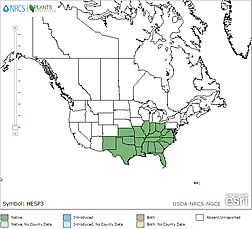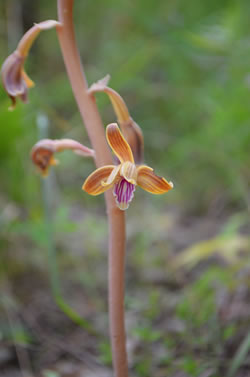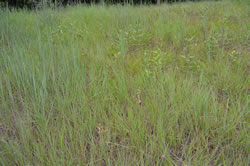Plant of the Week
 Hexalectris spicata range map. USDA PLANTS Database.
Hexalectris spicata range map. USDA PLANTS Database.
 Crested Coralroot Orchid (Hexalectris spicata).
Crested Coralroot Orchid (Hexalectris spicata).
 Crested Coralroot Orchid (Hexalectris spicata).
Crested Coralroot Orchid (Hexalectris spicata).
Crested Coralroot Orchid (Hexalectris spicata)
By Christopher David Benda
This unusual plant in the Orchid family (Orchidaceae) is called crested coralroot orchid. The genus name “Hexalectris” is Greek and means, “six cock,” referring to the six raised ridges on the lip that resemble a rooster’s crest. The species name “spicata” refers to the flowers being produced on a spike. It is called crested coralroot orchid because of the rhizomatous nature of the species where the twisted roots look like corals.
This orchid is saprophytic, meaning it lives off fungi and decaying organic matter. It contains no chlorophyll and is therefore not green, so it cannot photosynthesize. Because of this, there is no need to produce leaves. This dubious lifestyle might contribute to the plant ranging in size from six inches tall to over eighteen inches tall, but it is consistently larger than the true coralroot orchid genus Corallorhiza.
The flowering stems of this summer bloomer are light brown and easily overlooked in the tall grass or leaf litter. The subtle flowers reveal spectacular beauty when closely examined. Three curved sepals streaked with purple spread horizontally and vertically. Two petals are similar, and the lowest petal, the lip, is the most striking feature of the flower, with a deep, striped, magenta hue. Flowers are thought to be pollinated by bumblebees.
This is a plant of calcareous, well-drained areas like limestone glades and oak-hickory woodlands. It is uncommon in the southeastern portion of the United States and is listed as endangered or threatened in many states where is occurs.



